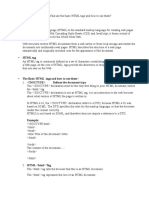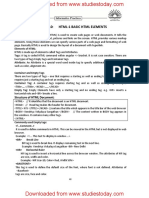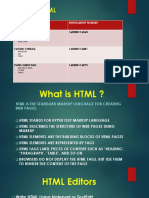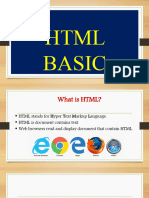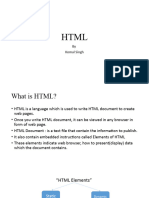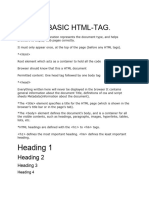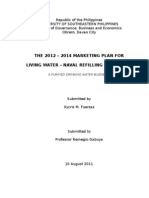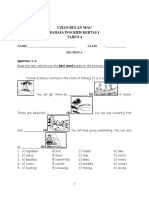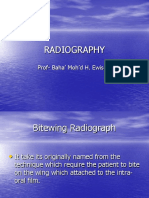0% found this document useful (0 votes)
5 views19 pagesHTML
HTML, or Hyper Text Markup Language, is the foundational language used to create web pages, consisting of various tags that instruct browsers on how to display content. Each web page is structured with a HEAD and BODY section, containing essential tags like <HTML>, <HEAD>, <TITLE>, and <BODY> to define the document and its content. Additionally, HTML includes various tags for formatting text, adding images, creating links, and structuring tables.
Uploaded by
Maria Rizette SayoCopyright
© © All Rights Reserved
We take content rights seriously. If you suspect this is your content, claim it here.
Available Formats
Download as PPTX, PDF, TXT or read online on Scribd
0% found this document useful (0 votes)
5 views19 pagesHTML
HTML, or Hyper Text Markup Language, is the foundational language used to create web pages, consisting of various tags that instruct browsers on how to display content. Each web page is structured with a HEAD and BODY section, containing essential tags like <HTML>, <HEAD>, <TITLE>, and <BODY> to define the document and its content. Additionally, HTML includes various tags for formatting text, adding images, creating links, and structuring tables.
Uploaded by
Maria Rizette SayoCopyright
© © All Rights Reserved
We take content rights seriously. If you suspect this is your content, claim it here.
Available Formats
Download as PPTX, PDF, TXT or read online on Scribd
/ 19

